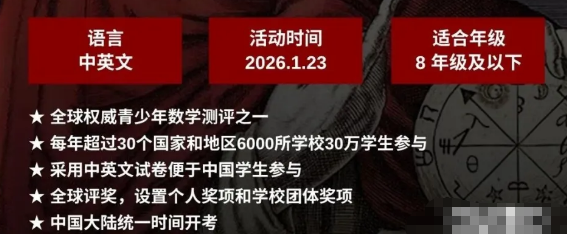在新冠疫情阴霾的笼罩下,我们如履薄冰地度过了忐忑的三年。现如今,阴霾在慢慢散尽。
如果在一个安全、繁荣、互信、稳定的世界里,我们通常会选择周游世界,从国际视野之旅中获得最丰富立体的心智成长。但是,如果是一个动荡、封闭的国际世界,那么也许我们唯一能做的,就是不要失落自己对世界的感知。
我们害怕,这个时代的孩子会一点一滴逐步失去这种国际联系,可能最初以不易察觉的速度,而后突然就找不见世界的踪影。
而我们相信,越是动荡不安、快速变化的世界里,学生们更需要用逻辑武装大脑。
WSDA坚持于通过一道道辩题,让学生们用精神和思想去丈量世界,来深度探索这个有趣的世界。
正是因为这些辩题的存在,WSDA辩手们能以更多元的角度洞察和理解这个纷繁复杂的世界。每一种世相都有它存在的理由,每一种存在都有它的阴暗和美好。
在一次次的比赛中,他们不知不觉间认识到,这个世界不是只有上下高低这一个维度,它不是一条孤单的直线,许多人不是在我们之上或之下,而是在我们左右,与我们相伴而行。
现在 重点 来了!经过长达 一个月 的投票时间,大家所期待的、盼望的它终于诞生了!那就是——
2023WSDA全国总决赛公共论坛式辩论辩题!
Resolved: Plea bargaining ought to be abolished in criminal justice systems.
刑事司法系统中应废除辩诉交易。
这个在法律领域自带“流量”的话题,就是本届全国总决赛的辩题。
我们希望选手们通过自己选择出来的辩题,学会从不同维度去看看待一道辩题、分析一则社会事件,培养信息筛选能力、多角度思考能力,建立辩手的思辨力。
总决赛PF辩题第一手资料!
以下是曾担任英国律师,高级市政规划师,现任辩论教练的Kit教练对本届辩题的简要介绍及解析:
Introduction
Welcome students to your summer topic. This topic is quite refreshing and departs from the previous topics concentrated around America or technology related areas. So, I am confident students will enjoy this topic, just as much as previous topics.
To understand the topic, there are certain key words that must be defined, such as what is the criminal justice system (CJS), and what is plea bargaining (PB)? Well first, on the meaning of the CJS you should understand there are two strands of law in our society, 1) civil law, and 2) criminal law.
Criminal and Civil laws
1. Civil law relates to law governing your everyday affairs, such as contract law (i.e. you buy a car using money in exchange for the car.); tort law (i.e. you break my car, so you must pay for it.); and business law (i.e. you set up a company selling your own car.) etc.
2. On the other side is criminal law, which is what we are debating on this topic. It relates to “the part of the legal system that punishes people who break the law” A, such as killing people (murder), or even stealing things (theft). These crimes are considered harmful to society. Thus, criminal law serves to protect the public at large and maintain the accepted values of our society B. Or else, our society will break down, or be in chaos, if everyone steals or kills without a consequence.
Criminal Justice System (CJS)
The CJS runs criminal law in society to preserve law and order. In its exact meaning, it is “the system in a society by which people who are accused of crimes are judged in court” C. The CJS is cut further into three different strands, which consists of:
1) the law enforcement, such as the police who investigate crimes
2) the law courts, which decides what punishment be used on the criminals
3) the corrections, such as prison or probation services who carry out the punishment.
It is important to note that the debate topic does not state which country the CJS applies to. Therefore, students should avoid applying only to any one specific country, as this topic really should apply to all the countries that uses plea bargaining in their criminal justice systems. However, for this topic analysis, I intend to use the English legal system as an example, because this system is more commonly used worldwide, such as in the United Kingdom, Canada, Australia, and even current and former Commonwealth countries. American law is also very similar to the UK as well.
Plea Bargaining
Let’s look at the meaning of “plea bargaining” (PB). PB is an agreement to allow someone accused of a crime to admit to being guilty of a less serious crime, to avoid being tried for the more serious crime D. Or a defendant may accept a plea bargain to secure a more lenient punishment. To understand how this actually works, we also need to understand how criminal law works.
People Inside the Courtroom
First, it may be helpful to briefly describe who are the main actors inside a courtroom. When the defendant goes to court, there will be:
1. A judge (who is the boss running the courtroom and he even decides what punishment to give if the defendant were found guilty)
2. The state prosecutor (who must prove the defendant is guilty of the crime accused)
3. The defense lawyer (who defends the defendant to avoid jail or to minimize the punishment)
4. The witness (who gives evidence on what they know about the case)
5. The juries (a group of normal people selected to decide whether the defendant is guilty or not guilty)
How Criminal Law works
For example, in England, if a person (defendant) got into an argument with another person (victim). The argument then turns into a fight where the defendant gets a knife and stabs the victim who later dies. The defendant will have killed another person by committing murder, which carries a life sentence if found guilty, and in some other countries, it carries the death penalty as well.
So the police will be called to catch the defendant. The police will then arrest the defendant and start investigating the case, collecting evidence to show that they have got the right person and that the defendant they are holding did kill the victim. The police will then pass the investigation file with all the evidence to the state prosecutor (Crown Prosecution Service).
At this stage, the prosecution will have several options to lay out its charge against the defendant, all different charges will have different degrees of standard of proof, with different seriousness and therefore different lengths of prison sentences if convicted. In the above murder case, the options available are:
- The most serious charge is “murder” – which is intention to kill or cause grievous bodily harm on the victim E. This requires “intention” to be proven by the prosecution, which is quite difficult to show and it is similar to getting a 1st class degree (70%) at a university. This charge carries a life sentence;
- If “murder” cannot be proven, there is the lesser alternative of “causing grievous bodily harm with intent” (GBH intent) F, which requires to prove the defendant “intended or foresaw the result as virtually certain G. This sentence carries a prison sentence between 3 to 16 years H. You will see this is easier for the prosecution to prove as this requires less standard of proof, just similar to getting an upper 2nd class degree (60%) at university;
- If point 2 cannot be proven either, the prosecution can drop to a lesser charge of “causing grievous bodily harm” (GBH) I, which requires an even lower standard of proof, showing the “foresight the risk of some physical harm” J. This is similar to getting a lower 2nd class degree (50%) at university. The maximum sentence is 5 years’ imprisonment.
- Furthermore, if point 3 cannot be proven, the prosecution can still drop to an even lesser charge of “causing actual bodily harm” (ABH) K, which requires the prosecution to prove the defendant was “reckless” (40%), which carries a 5 years’ prison sentence.
The prosecutor has the responsibility (the burden of proof) to prove that the defendant did commit any crime. However, if there is not enough evidence, the prosecutor will fail to secure the conviction, and so the defendant must be set free as a result.
On the above murder case, for the prosecution to succeed, he must have a strong burden of proof to establish murder:
1. The actions D (Latin: actus reus) of the defendant did cause the death of the victim.
2. The defendant has intention L (Latin: mens rea) to kill or intention to cause grievous bodily harm on the victim.
3. To prove “beyond reasonable doubt” to the juries about 1) and 2).
The prosecution is going to have a problem proving points 2) and 3) beyond a reasonable doubt to show the defendant is guilty. This is because to prove a defendant has the “intention” is extremely difficult, as it is virtually impossible to know exactly what the defendant was thinking when he killed the victim. In fact, this is the highest test set in criminal law where in many cases, the prosecution may struggle to show a strong link the defendant wanted to kill the victim, unless there was a confession made, preplanning to buy a weapon or even when a witness heard the defendant as saying he wanted to kill that victim etc.
To prove “beyond a reasonable doubt” is another difficulty the prosecution has because it is often hard to convince the jury, if not, most juries, that the defendant is guilty. Some legal systems like the UK adopts a method of “due process” whereby they prefer to set free ten criminals rather than put one innocent person in jail. In this case, the juries will be guided by the judge that if they are not very sure the defendant intentionally killed the victim, then this does not meet the burden of “beyond a reasonable doubt” test, and the defendant must be set free.
How Plea-Bargaining Works
To avoid the problem of setting free a guilty person, the prosecution may want to reduce the charge to a lesser offence from “murder” to “causing grievous bodily harm with intent” to secure a successful conviction. So this is where plea bargaining comes into play.
The prosecution offers a plea bargain, to drop the murder charge if the defendant accepts the lesser crime of “grievous bodily harm with intent”, which reduces a life sentence to just 16 years in prison.
Conversely, plea bargaining is also available to the defendant where there appears to be strong evidence to secure a conviction for murder, and the defendant may use plea bargaining as a way to mitigate or to reduce his sentence in prison. For example, the defendant may offer a plea bargain to accept he did kill the victim, but he had a successful defense that he was either “provoked”, or he was involuntarily made drunk” or he used “self-defense” as a plea. This would reduce a life sentence to a time limited sentence in prison instead.
Con Framing
It is useful to point out in this debate, that plea bargaining does not just apply to serious crimes like murder, or theft, which require the full attention in court. There are also smaller offences committed by many ordinary citizens on a daily basis as well, where PB is used, and this appears to be Con team’s main argument in this debate.
Use motoring offences for example, where many drivers are often late for work or in a hurry for some other reasons, and so they decide to go over the speed limit, but they get caught by a speed camera or the police. There are probably thousands of speeding offences committed by drivers on a daily basis. If they all require a court trial to settle the case, this would effectively be wasting people’s time, money and stress going to court, as well as ineffective use of the limited resources in the CJS system, where the court will be clogged with cases and the prosecution having tons of caseload to work with.
PB is a very effective key method to reduce the workload on the CJS. Under English law, a driver has up to 12 points before he loses his license. It is standard practice for the Police to issue PB where they offer a Fixed Penalty Notice, which is effectively a speeding ticket so that the driver is encouraged to accept the wrongdoing and incur a 3 points deduction and a small fine ($100) to settle the case.
If the driver does not accept the PB, he would have to challenge the wrongdoing in court, which means he needs to spend a lot of time to prepare his defense, hire a lawyer to represent him, and take days off work to go to court. Not only this, going to court takes time to arrange a trial and the uncertainty can affect the driver’s mental health as well. If all goes well, the driver may be found not guilty. However, if the driver were found guilty, then he would suffer from losing more points deduction (usually 6 points) on his driving license, as well as the need to pay extra court costs, legal fees and also a much heavier fines as a result that would add up to thousands in costs ($1000s).
Therefore, in most cases, many drivers prefer to accept PB, to save time and costs. The CJS also benefits with reduction to their workload, less strain on government resources and receive extra revenue from the fines paid.
In summary, plea bargaining may be advantageous in these areas:
- There is incentive to secure speedy convictions and reduce time and costs;
- It reduces the pressure on the CJS to reduce the workload of the police, the courts and the prison or probation services.
- Reducing costs on the CJS is also good value for money for the taxpayers.
- PB can help the government generate much needed income from the fines paid by offenders.
- PB allows the police, court and prison to prioritize their workload to focus on more serious cases.
- There is flexibility for the prosecution to secure a conviction to restore some justice albeit on a lesser charge to prevent any social outrage (i.e. people getting away from murder)
- Some countries may prefer to rehabilitate offenders rather than penalizing them. This is influential to reduce prison overcrowding, which costs taxpayers a lot of money. Furthermore, it avoids labelling offenders as criminals for committing minor crimes like speeding offices, which should not make a person go to jail for.
- Prosecutors can offer a plea bargain to get witness testimony against a more important or more difficult convict defendant.
Pro Framing
On the opposite side of the coin is the Pro team, that seeks to argue PB should be abolished. Their main argument is that PB is a tool that would erode the natural justice or fairness in the criminal justice system. Take for example in the murder case, as stated above, where if the prosecution cannot secure a murder conviction, or even GBH with intent, and PB is accepted to the charge of grievous bodily harm (GBH), the defendant will be placed in prison for a maximum of 5 years.
It may seem to the general public that killing a person would only costs 5 years in jail, is somewhat ridiculous. However, it may seem even crazier to know that under sentencing guidelines, which are largely affected by political decisions (i.e. lack of funds invested in CJS or initiatives to reduce prison overcrowding), any offenders may have their sentences reduced in half, due to good behavior in jail. If this were to apply to the defendant, he could potentially set free from prison after serving 2.5 years in jail for killing the victim.
Imagine the disbelief and shock this would cause to the general public and especially to the victim’s friends and family, who may lose faith in the CJS altogether. This loss of faith causes a social outrage or social unrest, which can hurt the law and order of our peaceful society. Therefore, PB appears to help criminals more than to protect the law abiding citizens of the country.
In summary, these are some of the benefits found to help the Pro team:
- PB erodes natural justice or fairness, which will also cause social outrage especially in despicable crimes, such as rapist or child murderers;
- PB is seen to support the criminals instead of given closure to the victims or their families.
- PB reduces the deterrent effect of the actual crime committed, which makes crimes more trivialized and makes the criminal justice system ineffective;
- PB makes it easier for career criminals to get back into society putting the public at risk;
- PB may be seen as a money making scheme for the government, which is especially prevalent in motoring offences, and this makes the public distrust or turn against the police.
- PB is seen as encouraging innocent defendants (especially on motoring offences) to accept a wrongdoing on a smaller charge, instead of offering natural justice to them.
- To achieve natural justice appears much more expensive, which is not available to those who cannot afford it.
- Distrust in CJS may result in victims and their community to become local vigilantes to secure revenge (street justice) or fight back against crimes.
References
Cambridge Dictionary meaning of Criminal Law
CRIMINAL LAW | English meaning - Cambridge Dictionary
Pringle (2014) meaning of Criminal Law
Criminal Law | The Canadian Encyclopedia
Cambridge Dictionary meaning of Criminal Justice System
CRIMINAL JUSTICE SYSTEM definition | Cambridge English Dictionary
Attorney-General’s Reference (No.3 of 1994) 1998 – Actus reus of murder
P.Childs, Nutcases Criminal Law, p58, 3rd ed, Thomson Sweet & Maxwell
Cambridge Dictionary meaning of Plea Bargain
PLEA BARGAIN | English meaning - Cambridge Dictionary
S18 Offences Against the Person Act 1861 – Actus reus of Causing Grievous Bodily Harm with Intent.
P.Childs, Nutcases Criminal Law, p45, 3rd ed, Thomson Sweet & Maxwell
R v Woollin 1998 – Mens rea of Causing Grievous Bodily Harm with Intent.
P.Childs, Nutcases Criminal Law, p17, 3rd ed, Thomson Sweet & Maxwell
Clerks Grievous Bodily Harm with Intent – 16 years’ prison sentence
GRIEVOUS BODILY HARM (GBH) WITH INTENT - North East Barristers Chambers (nechambers.co.uk)
S18 Offences Against the Person Act 1861 – Actus reus of Causing Grievous Bodily Harm
P.Childs, Nutcases Criminal Law, p43, 3rd ed, Thomson Sweet & Maxwell
S18 Offences Against the Person Act 1861 – Mens rea of Causing Grievous Bodily Harm
P.Childs, Nutcases Criminal Law, p44, 3rd ed, Thomson Sweet & Maxwell
S47 Offences Against the Person Act 1861 – Mens rea of Causing Actual Bodily Harm
P.Childs, Nutcases Criminal Law, p40, 3rd ed, Thomson Sweet & Maxwell
R v Moloney 1985 – Mens rea of Murder
P.Childs, Nutcases Criminal Law, p59, 3rd ed, Thomson Sweet & Maxwell
2023WSDA全国总决赛Junior备稿辩题!
第一轮备稿辩题:
Everyone should pay the same percentage of tax on the money they make.
第二轮备稿辩题:
Primary-aged students should be restricted to use electronic devices for no more than 2 hours a day.
Junior备稿辩题分析
1. Everyone should pay the same percentage of tax on the money they make.
Taxation: Flat tax vs. progressive tax
The concept of whether everyone should pay the same percentage of tax on the money they make is a matter of tax policy and fairness. It is important to note that tax systems vary across countries, and different approaches are used to achieve various economic and social objectives.
Pro side may suggest that it promotes simplicity, fairness, and economic growth. They believe that a single tax rate for all individuals encourages a sense of equality and removes biases or incentives created by progressive tax systems. It also simplifies tax compliance and reduces administrative costs.
Con side could talk about a flat tax may disproportionately burden lower-income individuals, as a higher percentage of their income goes toward taxes compared to wealthier individuals. Progressive tax systems, on the other hand, implement higher tax rates for higher income brackets, which can be seen as a way to redistribute wealth and address income inequality.
The choice between a flat tax and a progressive tax largely depends on societal values, economic goals, and the desired level of income redistribution within a country.
2. Primary-aged students should be restricted to use electronic 的vices for no more than 2 hours a day.
Restricting electronic device usage for primary-aged students: The amount of time children spend on electronic devices is a topic of concern for many parents and educators. While electronic devices can provide educational and recreational benefits, excessive screen time may have negative impacts on children's health, social interactions, and overall development.
Pro could choose to state that it can help promote healthy lifestyles, encourage physical activity, and foster face-to-face social interactions. They believe that limiting screen time can also enhance cognitive and creative development by encouraging children to engage in other activities such as reading, playing outdoors, or pursuing hobbies.
Con side could structure the arguments by giving electronic devices can be valuable tools for learning and entertainment, and a complete ban may hinder children's access to educational resources and technological skills. They suggest that instead of strict limitations, parents and educators should focus on teaching responsible and balanced use of electronic devices, setting guidelines for appropriate usage, and promoting a variety of activities that support child development.
Ultimately, finding the right balance between screen time and other activities for primary-aged students requires considering individual needs, monitoring content, and ensuring a healthy and well-rounded upbringing.
It's important to note that public opinion on these matters may vary, and societal perspectives may change over time as new research and evidence emerge.
















